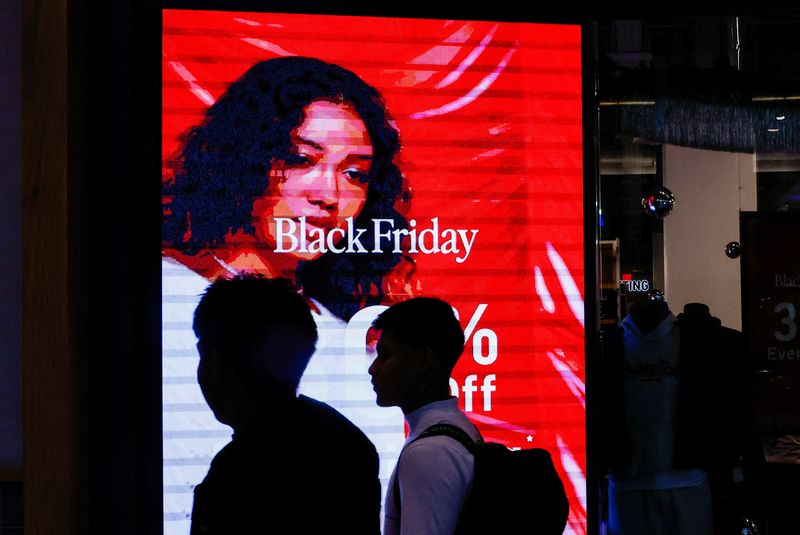(Reuters) – U.S. shoppers used their mobile phones, laptops, desktops and other devices to make roughly $10.8 billion in purchases online on Black Friday, an updated tally from Adobe (NASDAQ:ADBE) Analytics showed.
Black Friday, the day after American Thanksgiving, marks the official start of the holiday shopping season for retailers and competition has intensified among retailers to win every penny-pinched shopper seeking discounts.
Increased online shopping potentially favors e-commerce giants such as Amazon.com (NASDAQ:AMZN) and Walmart (NYSE:WMT). Walmart, which operates 4,700 U.S. stores, has invested heavily in store-to-home deliveries for the holiday season to boost e-commerce.
U.S. spending online on Black Friday rose 10.2%, said Adobe, which keeps track of devices that use its software to help power more than 1 trillion visits to U.S. retail sites.
Corey Coscioni, 58, said he looked for bargains online as well as in stores on Black Friday, seeking “gifts for everyone: my wife, my daughter, and myself.”
Top selling merchandise online included makeup, skincare and haircare products, as well as bluetooth speakers and espresso machines, Adobe said on Saturday.
Online sales of toys rose 622% compared to average daily sales in October, while jewelry sales rose 561% and appliances spiked 476% compared to October, it added.
Department store chains such as Macy’s (NYSE:M) and Kohl’s (NYSE:KSS) as well as big-box retailer Target (NYSE:TGT) could see muted sales this season, which is shorter with only 26 days between Thanksgiving and Christmas.
In 2023, U.S. shoppers spent $9.8 billion online on Black Friday, and in 2022, they spent $9.1 billion, Adobe said.

